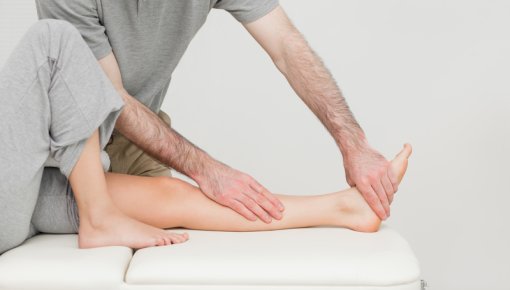Bleakley CM, McDonough SM, MacAuley DC. Some conservative strategies are effective when added to controlled mobilisation with external support after acute ankle sprain: a systematic review. Aust J Physiother 2008; 54(1): 7-20.
De Vries JS, Krips R, Sierevelt IN et al. Interventions for treating chronic ankle instability. Cochrane Database Syst Rev 2011; (8): CD004124.
Derry S, Moore RA, Gaskell H et al. Topical NSAIDs for acute musculoskeletal pain in adults. Cochrane Database Syst Rev 2015; (6): CD007402.
Feger MA, Herb CC, Fraser JJ et al. Supervised rehabilitation versus home exercise in the treatment of acute ankle sprains: a systematic review. Clin Sports Med 2015; 34(2): 329-346.
Hansrani V, Khanbhai M, Bhandari S et al. The role of compression in the management of soft tissue ankle injuries: a systematic review. Eur J Orthop Surg Traumatol 2015; 25(6): 987-995.
Kerkhoffs GM, Handoll HH, de Bie R et al. Surgical versus conservative treatment for acute injuries of the lateral ligament complex of the ankle in adults. Cochrane Database Syst Rev 2007; (2): CD000380.
Miranda JP, Silva WT, Silva HJ et al. Effectiveness of cryotherapy on pain intensity, swelling, range of motion, function and recurrence in acute ankle sprain: A systematic review of randomized controlled trials. Phys Ther Sport 2021; 49: 243-249.
Nunes GS, Feldkircher JM, Tessarin BM et al. Kinesio taping does not improve ankle functional or performance in people with or without ankle injuries: Systematic review and meta-analysis. Clin Rehabil 2021; 35(2): 182-199.
Southerst D, Yu H, Randhawa K et al. The effectiveness of manual therapy for the management of musculoskeletal disorders of the upper and lower extremities: a systematic review by the Ontario Protocol for Traffic Injury Management (OPTIMa) Collaboration. Chiropr Man Therap 2015; 23: 30.
Struijs PA, Kerkhoffs GM. Ankle sprain. BMJ Clin Evid 2010.
Struijs PA, Kerkhoffs GM. Ankle sprain: the effects of non-steroidal anti-inflammatory drugs. BMJ Clin Evid 2015: pii: 1115.
Van den Bekerom MP, van der Windt DA, Ter Riet G et al. Therapeutic ultrasound for acute ankle sprains. Cochrane Database Syst Rev 2011; (6): CD001250.
Woitzik E, Jacobs C, Wong JJ et al. The effectiveness of exercise on recovery and clinical outcomes of soft tissue injuries of the leg, ankle, and foot: A systematic review by the Ontario Protocol for Traffic Injury Management (OPTIMa) Collaboration. Manual Ther 2015; 20(5): 633-645.
IQWiG health information is written with the aim of helping people understand the advantages and disadvantages of the main treatment options and health care services.
Because IQWiG is a German institute, some of the information provided here is specific to the German health care system. The suitability of any of the described options in an individual case can be determined by talking to a doctor. informedhealth.org can provide support for talks with doctors and other medical professionals, but cannot replace them. We do not offer individual consultations.
Our information is based on the results of good-quality studies. It is written by a team of health care professionals, scientists and editors, and reviewed by external experts. You can find a detailed description of how our health information is produced and updated in our methods.

